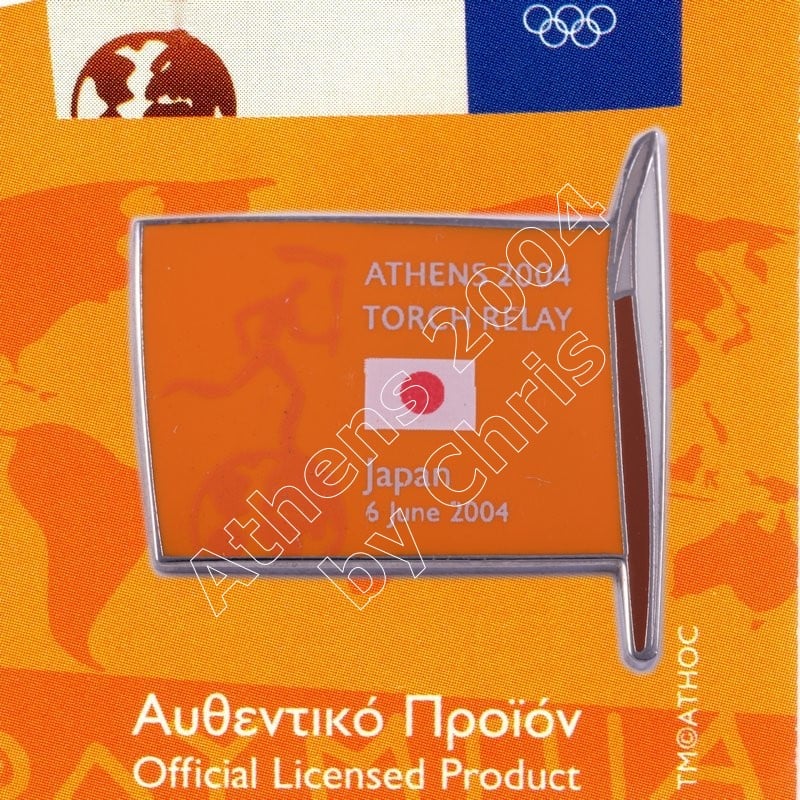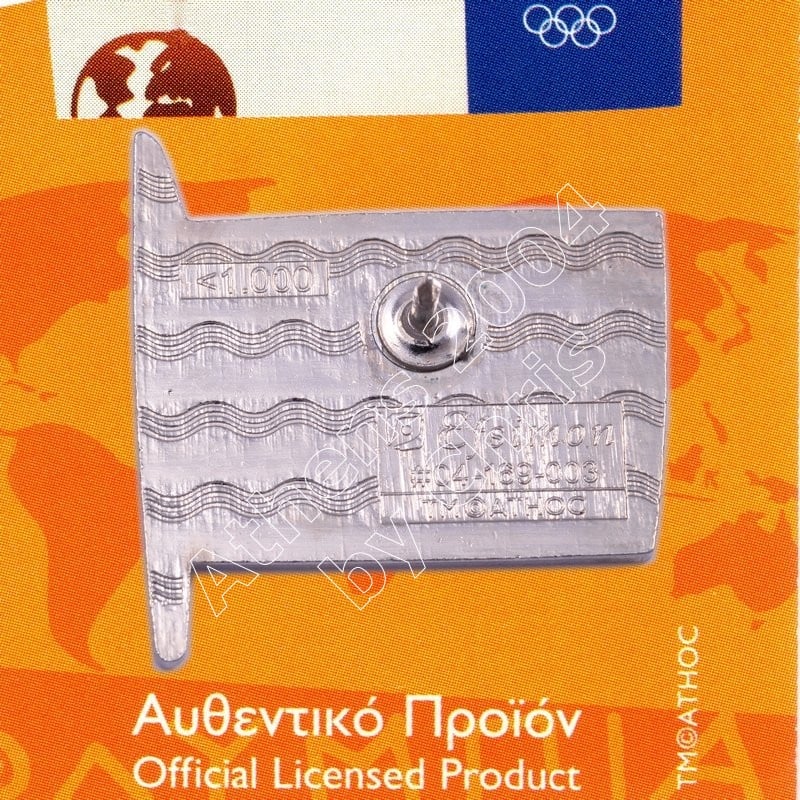Description
Japan – Torch Relay International Route with Flag and Torch
Athens 2004 Olympic Games Pin
The Olympic Flame passed from Japan
The 2004 Summer Olympics Torch Relay took the Olympic Flame across every habitable continent, returning to Athens, Greece. Every citywhich had hosted the Summer Olympics was revisited by the torch, as well as several other cities chosen for their international importance.
The relay was the first time the Olympic flame had travelled to Africa, India and South America. The flame was transported from country to country aboard a specially-equipped Boeing 747 leased from Atlanta Icelandic (Registration TF-ARO) called Zeus. On board the flame was carried and burned continuously in specially modified miners lamps.
The national flag of Japan is a white rectangular flag with a large red disc (representing the sun) in the center. This flag is officially called Nisshoki.
The Nisshoki flag is designated as the national flag in the Law Regarding the National Flag and National Anthem, which was promulgated and became effective on August 13, 1999. Although no earlier legislation had specified a national flag, the sun-disc flag had already become the de facto national flag of Japan. Two proclamations issued in 1870 by the Daijo-kan, the governmental body of the early Meiji Era, each had a provision for a design of the national flag. A sun-disc flag was adopted as the national flag for merchant ships under Proclamation No. 57 of Meiji 3 (issued on February 27, 1870), and as the national flag used by the Navy under Proclamation No. 651 of Meiji 3 (issued on October 27, 1870). Use of the Hinomaru was severely restricted during the early years of the American occupation after World War II; these restrictions were later relaxed.
The sun plays an important role in Japanese mythology and religion as the Emperor is said to be the direct descendent of the sun goddess Amaterasu and the legitimacy of the ruling house rested on this divine appointment and descent from the chief deity of the predominant Shinto religion. The name of the country as well as the design of the flag reflect this central importance of the sun. The ancient history Shoku Nihongi says that Emperor Mommu used a flag representing the sun in his court in 701, and this is the first recorded use of a sun-motif flag in Japan. The oldest existing flag is preserved in Unpo-ji temple, Koshu, Yamanashi, which is older than the 16th century, and an ancient legend says that the flag was given to the temple by Emperor Go-Reizei in the 11th century. During the Meiji Restoration, both the sun disc and the Rising Sun Ensign of the Imperial Japanese Navy became major symbols in the emerging Japanese empire. Propaganda posters, textbooks, and films depicted the flag as a source of pride and patriotism. In Japanese homes, citizens were required to display the flag during national holidays, celebrations and other occasions as decreed by the government. Different tokens of devotion to Japan and its Emperor featuring the Hinomaru motif became popular during the Second Sino-Japanese War and other conflicts. These tokens ranged from slogans written on the flag to clothing items and dishes that resembled the flag.
Public perception of the national flag varies. Historically, both Western and Japanese sources claimed the flag was a powerful and enduring symbol to the Japanese. Since the end of World War II (the Pacific War), the use of the flag and the national anthem Kimigayo has been a contentious issue for Japan’s public schools. Disputes about their use have led to protests and lawsuits. The flag is not frequently displayed in Japan due to its association with ultranationalism. To Okinawans, the flag represents the events of World War II and the subsequent U.S. military presence there. For some nations that had been occupied by Japan, the flag is a symbol of aggression and imperialism but in another hand, to some Japanese, the flag represents Japan and no other flag could take its place. The Hinomaru was used as a tool against occupied nations for purposes of intimidation, asserting Japan’s dominance, or subjugation. Several military banners of Japan are based on the Hinomaru, including the sunrayed Naval Ensign. The Hinomaru also serves as a template for other Japanese flags in public and private use.
The pin depicts the flag of Japan where passed the Olympic Flame
Product: Olympic Pin
Pin code: #04-169-003
Tiraz: <1.000pcs
Official Licensed Product
Licensed Manufacturer: Efsimon Collection

Buy it Now and Join the Wonderfull Winning World!!!





Reviews
There are no reviews yet.